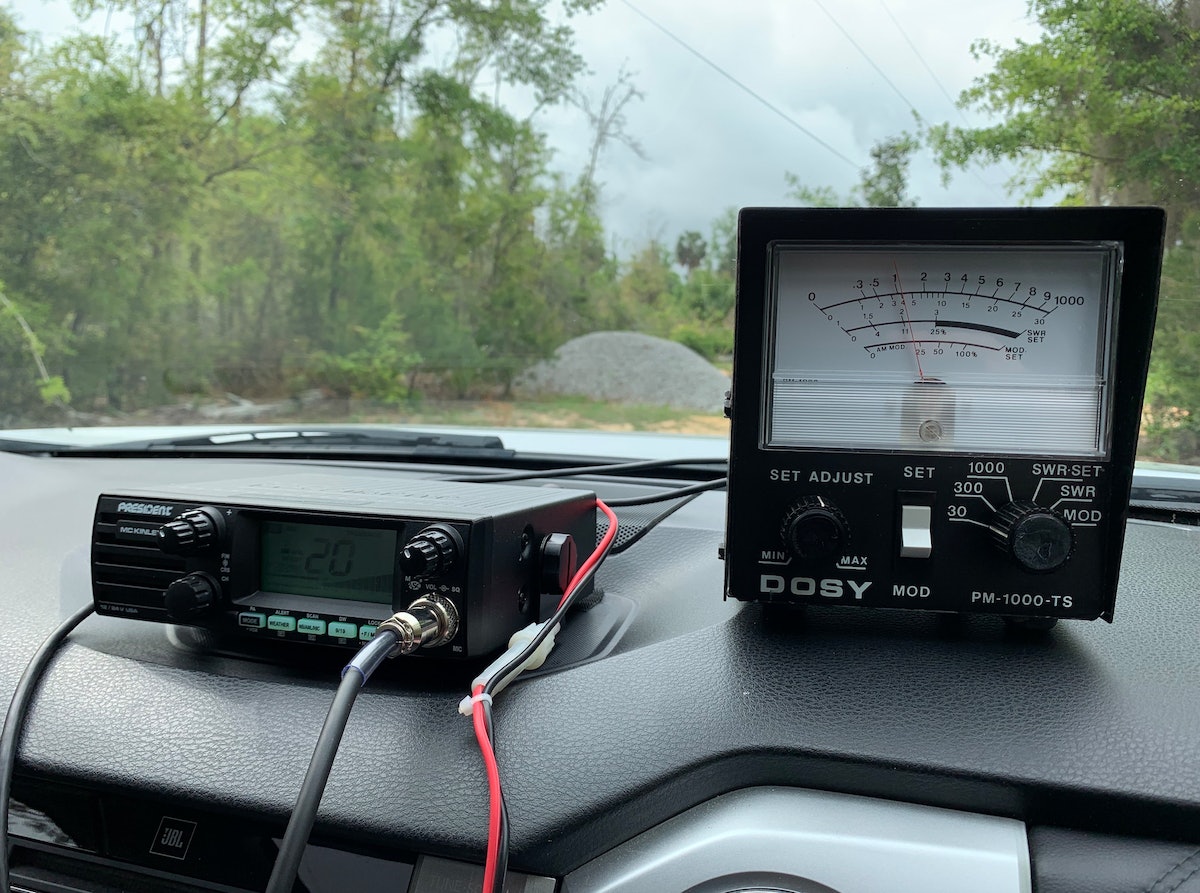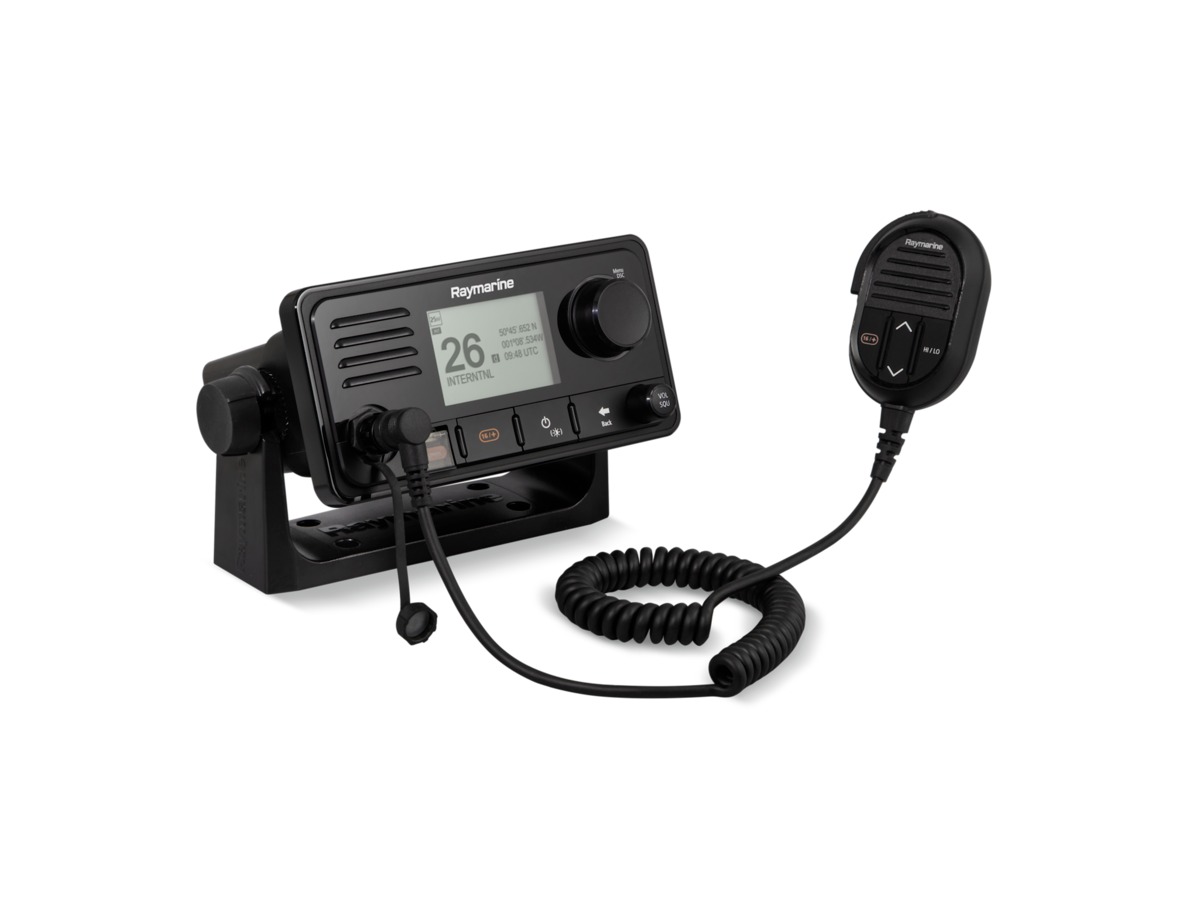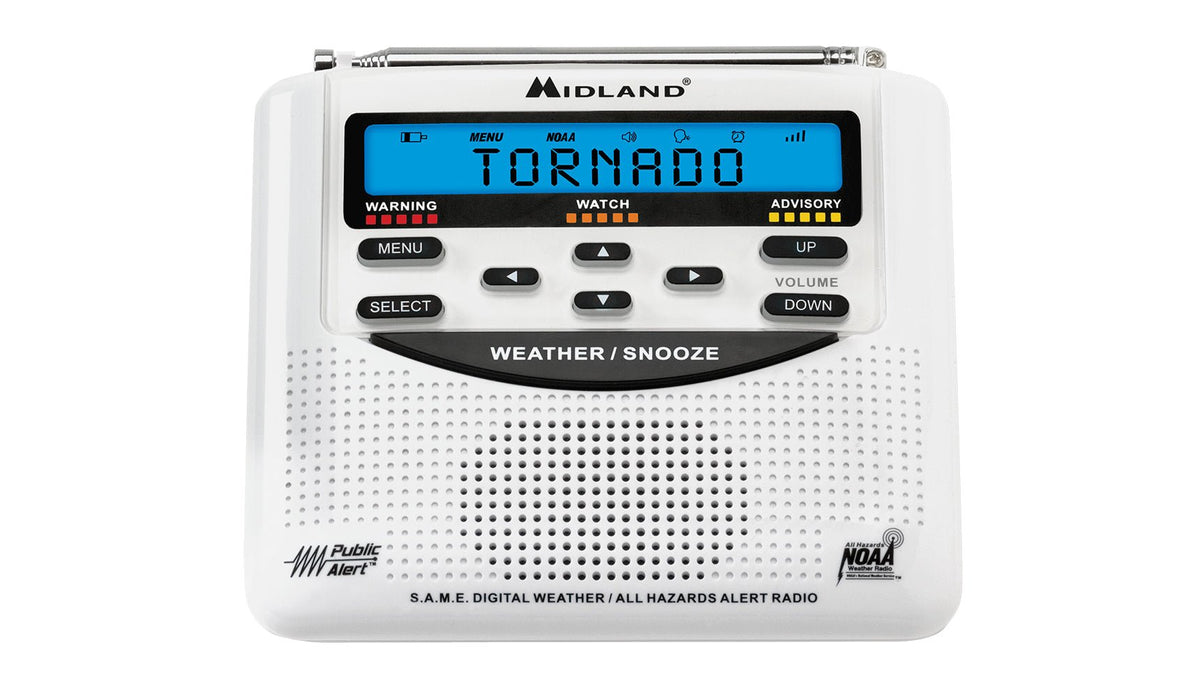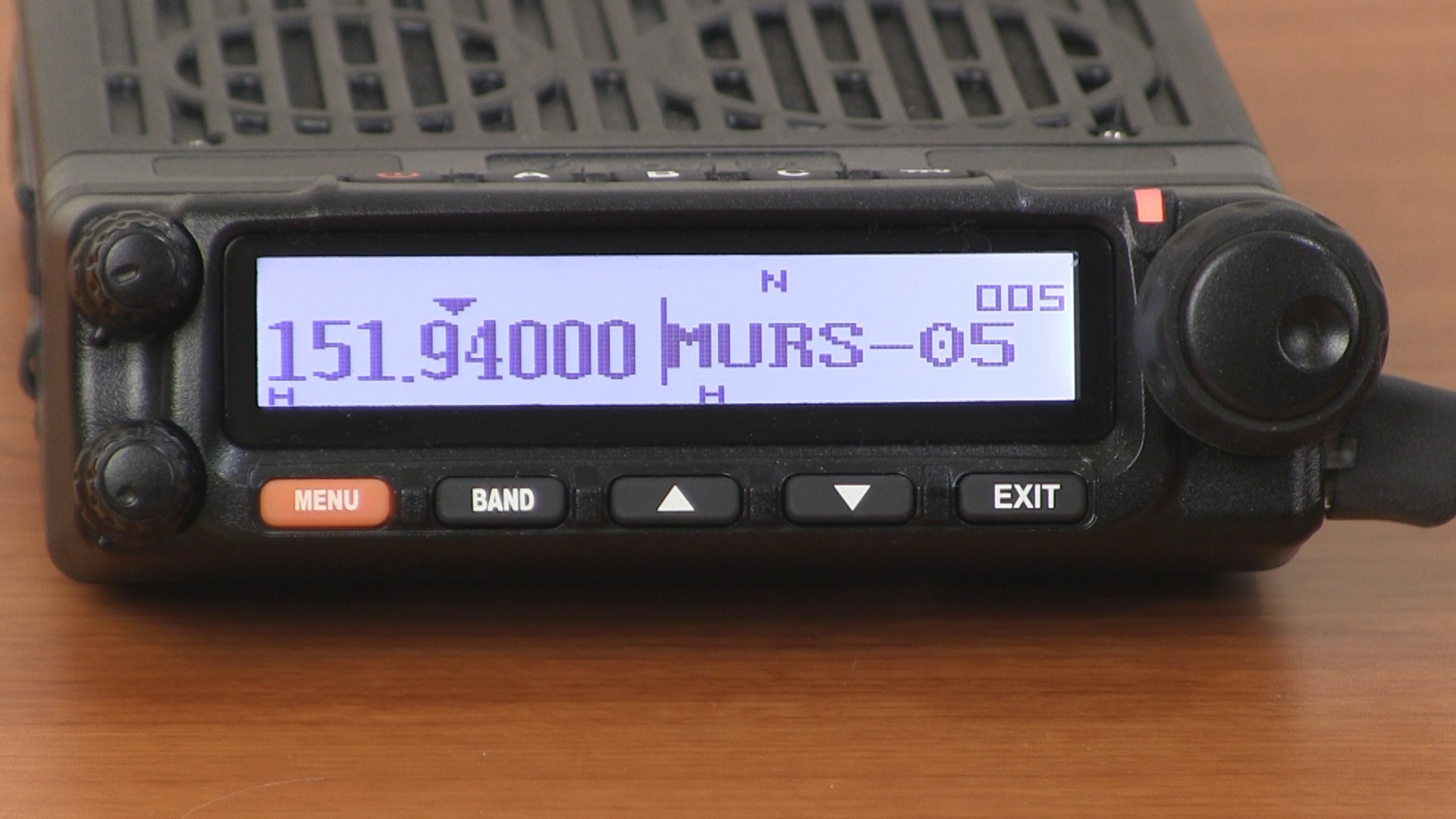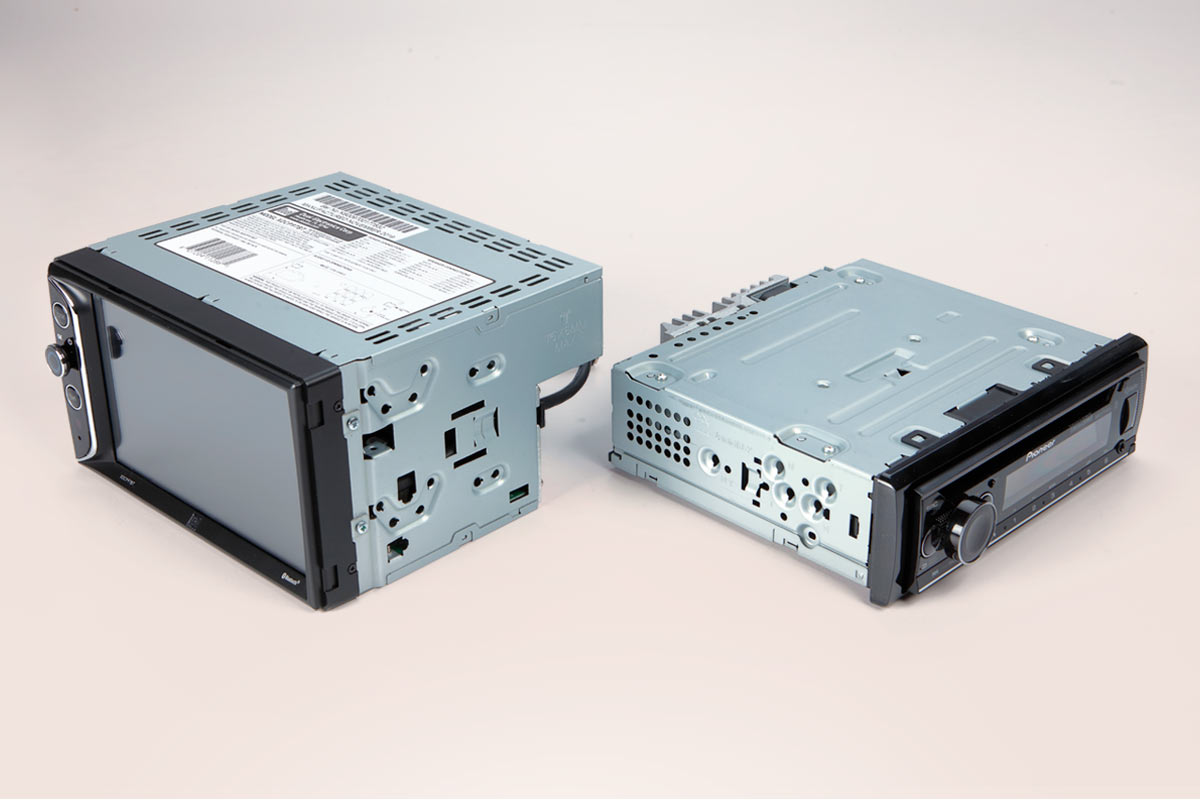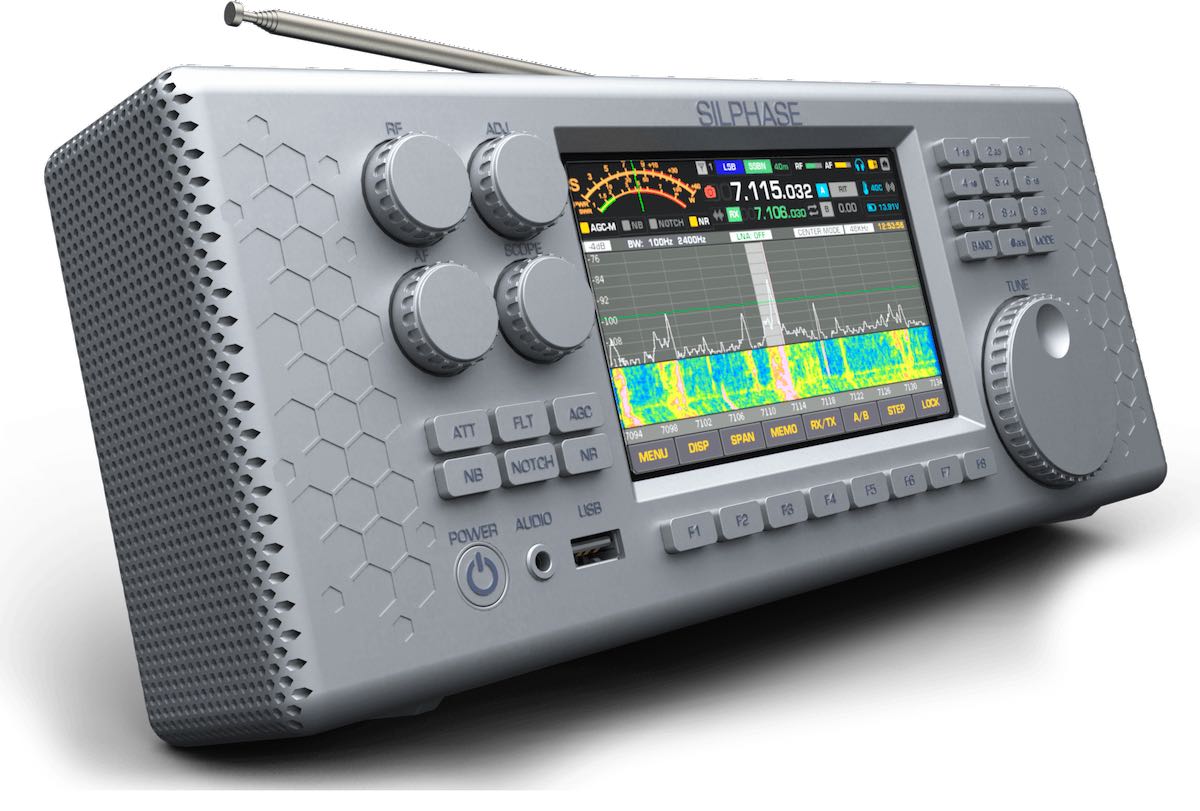Home>Devices & Equipment>Radio>What Is A Crystal Radio
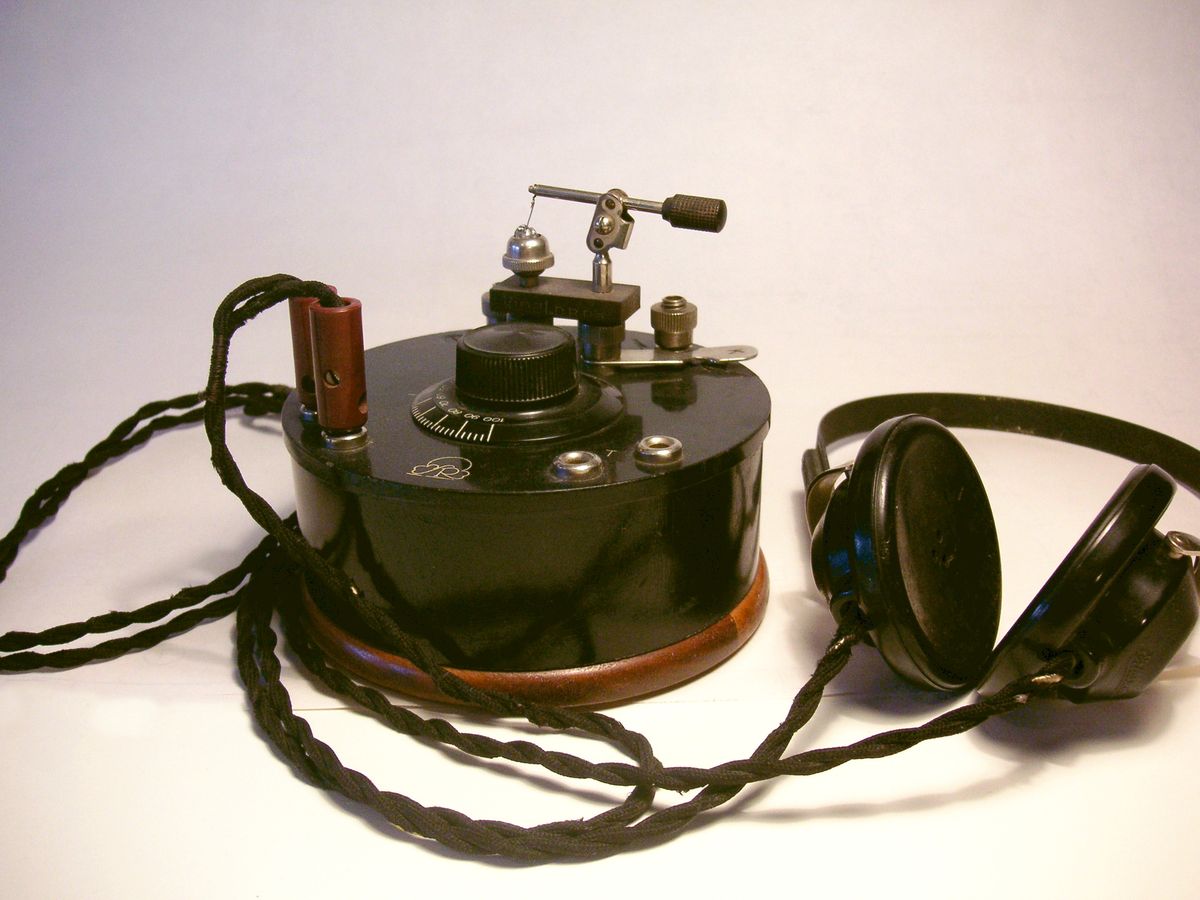

Radio
What Is A Crystal Radio
Modified: January 22, 2024
Discover the fascinating world of crystal radios and how they work. Learn how to build your own radio using a few simple components and enjoy hours of listening without the need for batteries or electricity.
(Many of the links in this article redirect to a specific reviewed product. Your purchase of these products through affiliate links helps to generate commission for AudioLover.com, at no extra cost. Learn more)
Table of Contents
Introduction
Radio has been a transformative medium since its inception, captivating audiences around the world with its ability to transmit audio signals through the airwaves. From the early days of bulky vacuum tube radios to the modern era of sleek digital receivers, radio technology has evolved significantly. However, amidst all the advancements, the humble crystal radio holds a special place in the history of radio.
In simple terms, a crystal radio is a basic radio receiver that uses a mineral crystal as a detector to convert radio waves into audible signals without the need for a battery or external power source. It may seem like a relic from the past, but crystal radios have an enduring appeal for radio enthusiasts and hobbyists who appreciate their simplicity and low-tech charm.
Crystal radios have a rich history that spans over a century. They gained popularity in the early 20th century when radio broadcasting was still in its infancy. People would tune in to their favorite stations using these minimalistic devices, fostering a deep connection with the world outside their homes.
This article delves into the fascinating world of crystal radios, exploring their history, how they work, the components that make them up, and even how to build a simple crystal radio yourself. Whether you’re a seasoned radio enthusiast or just curious about the origins of radio technology, this article aims to provide a comprehensive understanding of crystal radios and their place in the evolution of communication.
History of Crystal Radios
The roots of crystal radios can be traced back to the late 19th century. During this time, inventors and scientists were experimenting with different methods to receive wireless signals. However, it was not until the early 20th century that crystal radios gained popularity and became more accessible to the general public.
The invention of the crystal radio is often credited to a Canadian engineer named Reginald Fessenden. In 1901, Fessenden successfully transmitted voice and music through radio waves, using a device that included a crystalline mineral as a detector. This breakthrough sparked widespread interest and paved the way for the development of crystal radios as a consumer product.
In the following years, crystal radios became a common fixture in households across the world. They provided a cost-effective means for people to listen to radio broadcasts, opening up a world of entertainment, news, and information. Crystal radio sets were typically made by hobbyists who would craft their own receivers using readily available materials.
During the 1920s and 1930s, crystal radios experienced a golden age. They were a vital source of entertainment and information, with families gathering around the device to listen to their favorite radio programs. Manufacturers began producing commercial crystal radio sets, offering a range of designs and features to cater to different preferences.
However, crystal radios eventually started to decline in popularity as more advanced radio technologies emerged. The advent of vacuum tubes and the subsequent development of superheterodyne receivers offered improved performance and selectivity, making crystal radios less appealing to the general public.
Despite their decline in popularity, crystal radios never truly disappeared. They continued to have a dedicated following among radio enthusiasts and hobbyists who appreciated their simplicity and vintage charm. Today, crystal radios are often seen as nostalgic relics from a bygone era, serving as a reminder of the humble beginnings of radio broadcasting.
The history of crystal radios is a testament to the ingenuity of early inventors and the enduring appeal of a technology that resonated with people around the world. By understanding their historical significance, we can appreciate the impact that crystal radios have had on the development of radio as we know it today.
How Crystal Radios Work
Crystal radios may appear simple on the surface, but the science behind their operation is fascinating. These basic receivers work by harnessing the power of radio waves and using a crystal detector to convert the waves into electrical signals that can be audible through a connected headphone or speaker.
The key component of a crystal radio is the mineral crystal, typically made of galena or silicon. The crystal acts as a detector, allowing the alternating radio waves to pass through while only letting the audio or signal frequencies to be rectified.
When a radio signal is picked up by the antenna of a crystal radio, it creates an alternating current (AC) in the antenna. The AC signal is then passed through an adjustable tuning coil or inductor, which helps to select the desired frequency. By adjusting the position of an arm or tapping a slider along the coil, the user can fine-tune the radio to different frequencies.
From the tuning coil, the AC signal is directed to the crystal detector. The crystal detector is a tiny metal wire, often in the form of a point or a whisker, which makes contact with the surface of the mineral crystal. As the AC signal passes through the crystal, the varying voltage causes the crystal’s properties to change, enabling it to rectify the alternating current into a pulsating direct current (DC).
The pulsating DC then flows to a capacitor, which helps to smooth out the signal by storing and releasing electrical charge. This arrangement creates an audio signal that corresponds to the original radio wave, which can be heard through a connected headphone or speaker.
It’s important to note that crystal radios rely on the strength of the radio waves being received. They do not amplify the signal, which means they are more suitable for strong local stations or powerful transmitters. Consequently, crystal radios are best used in areas with good reception or with the aid of an external antenna to boost signal strength.
Overall, the simplicity of crystal radio design is what makes them appealing to radio enthusiasts. They offer a glimpse into the basics of radio technology and allow for a direct connection with the broadcasted signals, providing a unique and nostalgic listening experience.
Components of a Crystal Radio
A crystal radio may seem like a simple device, but it consists of several essential components that work together to receive and convert radio waves into audible signals. Understanding these components is key to building and understanding the functionality of a crystal radio.
1. Antenna: The antenna is responsible for capturing the radio waves and transferring them to the crystal radio. It can be a wire or a metal rod that is designed to receive and transmit radio frequency electromagnetic waves.
2. Tuning Coil: The tuning coil, also known as the coil or inductor, is a wire wound around a cylindrical or toroidal core. It allows for the selection of specific frequencies by adjusting the position of a tapping arm or slider along the coil. The tuning coil helps to fine-tune the received radio frequency and maximize the reception of desired stations.
3. Detector: The detector is a crucial component that converts the radio waves into electrical signals. In a crystal radio, the detector is typically a small metal wire, such as a cat’s whisker, that makes contact with a mineral crystal. The detector rectifies the alternating current from the radio waves, allowing for the extraction of the audio signal.
4. Crystal: The crystal is the heart of a crystal radio. It is usually made of galena or silicon and acts as the detector’s contact point. The crystal allows the audio frequencies to pass through while blocking the radio frequency in a rectification process, converting the AC signal into a pulsating DC signal.
5. Capacitor: The capacitor is an electrical component that stores and releases electrical charge. In a crystal radio, the capacitor is connected in parallel to the crystal detector. It helps to smooth out the rectified signal, eliminating any remaining pulsations and producing a more audible audio signal.
6. Headphones or Speaker: The audio signal produced by the crystal radio needs to be translated into sound. Headphones or an external speaker are connected to the crystal radio’s output to listen to the converted audio signal. The choice of headphones or speaker depends on personal preference and the desired listening experience.
These components work in harmony to capture, tune, detect, rectify, and transmit the radio waves into sound. While the components of a crystal radio may appear basic, their interaction and proper alignment are crucial for optimal performance and the ability to receive radio broadcasts.
Building a Simple Crystal Radio
Building a simple crystal radio can be a rewarding and educational experience, allowing you to explore the principles of radio technology and enjoy the satisfaction of creating your own functioning device. While there are various designs and methods, here is a basic guide to help you get started:
1. Gather the Components: To build a crystal radio, you will need a few key components. These include an antenna (a length of wire), a tuning coil (a coil wound on a cardboard tube), a crystal detector (such as a cat’s whisker or diode), a crystal (made of galena or silicon), a capacitor (to smooth out the rectified signal), and a set of headphones or a speaker.
2. Construct the Circuit: Start by creating the circuit. Connect one end of the antenna wire to one terminal of the tuning coil and the other end to the ground connection. Connect the other terminal of the tuning coil to the crystal detector. From the detector, connect a wire to one terminal of the capacitor. Finally, connect the other terminal of the capacitor to the headphones or speaker.
3. Set Up the Crystal Detector: Position the crystal detector, such as a cat’s whisker, in contact with the surface of the crystal. Gently adjust the detector until you find a “sweet spot” where contact is made with the crystal. This delicate adjustment allows for proper rectification of the radio waves.
4. Connect the Headphones or Speaker: Plug in your headphones or connect your external speaker to the output terminals of the crystal radio circuit. This will allow you to listen to the audio signal converted from the radio waves.
5. Fine-Tune and Experiment: With your crystal radio set up, start adjusting the position of the tapping arm or slider along the tuning coil. This will help you find the best position for obtaining good reception of radio stations. Experiment with different positions until you achieve the clearest and strongest signal for your desired station.
Building a simple crystal radio requires some experimentation and patience. You may need to adjust the components and fine-tune the circuit to achieve optimal performance. But once you successfully build your crystal radio, you’ll have a device that can receive local radio broadcasts without the need for any external power source.
Building a crystal radio is not only a fun DIY project but also a great way to gain hands-on experience with radio technology and appreciate the ingenuity of early inventors. So gather your components, follow the steps, and enjoy the magic of listening to radio waves with your homemade crystal radio!
Tips for Enhancing Crystal Radio Reception
Crystal radios are simple devices that can provide a delightful listening experience. To get the most out of your crystal radio and enhance reception, here are some helpful tips:
1. Outdoor Antenna: Consider installing an outdoor antenna to boost signal strength. A longer length of wire positioned higher above the ground can capture stronger radio waves, resulting in improved reception. Experiment with different antenna lengths and positions to find the optimal setup for your crystal radio.
2. Grounding: Ensure that your crystal radio is properly grounded. Grounding helps to minimize interference and can enhance the sensitivity of the radio. Connect a wire from the ground terminal of your radio to a grounding rod or a metal water pipe for effective grounding.
3. Variable Capacitor: If you have a variable capacitor, use it in your crystal radio circuit. A variable capacitor allows you to fine-tune and adjust the tuning frequency more precisely, improving the selectivity and reducing interference from adjacent stations.
4. Fine-Tune the Crystal Detector: Take time to find the optimal position for the crystal detector in contact with the crystal. Small adjustments to the detector’s position can significantly impact signal strength and clarity. Experiment with different contact points to find the “sweet spot” that provides the best rectification and audio output.
5. Experiment with the Tuning Coil: Adjusting the position of the tapping arm or slider along the tuning coil can help optimize reception. Fine-tune the coil’s position to obtain the clearest and strongest signal for the desired station. Try different tap points or slider positions until you achieve optimal performance.
6. Eliminate Interference: Crystal radios are sensitive to electromagnetic interference. To minimize interference, keep your crystal radio away from electronic devices, power cables, and other sources of electromagnetic noise. Positioning your radio away from these sources can help improve reception quality.
7. Nighttime Listening: Radio reception tends to improve at night when atmospheric conditions change. During nighttime, signals can travel farther, leading to a wider range of available stations. Consider experimenting with your crystal radio during nighttime hours to discover new stations and enjoy enhanced reception.
Remember, crystal radios rely on the strength of the received radio waves, so keep in mind that the available stations may vary depending on your location and atmospheric conditions. By following these tips and experimenting with different setups, you can optimize reception and make the most of your crystal radio listening experience.
Advantages and Limitations of Crystal Radios
Crystal radios have their own unique set of advantages and limitations that contribute to their charm and functionality. Understanding these can help you appreciate the strengths and limitations of these humble receivers.
Advantages:
1. Simplicity: Crystal radios are extremely simple in design and operation, making them accessible even to beginners. Their basic components and minimalistic approach allow for a hands-on understanding of radio technology and an enjoyable DIY experience.
2. No Power Source Needed: One of the key advantages of crystal radios is that they do not require an external power source. They harness the energy of the received radio waves to power the detection and audio output, eliminating the need for batteries or electricity.
3. Cost-Effective: Crystal radios are affordable to build or purchase. The components needed for a basic crystal radio are inexpensive and readily available, making it an affordable option for radio enthusiasts or those interested in exploring radio technology.
4. Local Station Reception: Crystal radios excel at receiving local stations with strong signals. They are ideal for tuning in to nearby AM stations and can provide a direct connection to radio broadcasts in your area.
Limitations:
1. Limited Selectivity and Sensitivity: Crystal radios have limited selectivity and sensitivity compared to more advanced radio receivers. They are more prone to interference from nearby stations or electronic devices and may not be able to pick up weaker or distant signals effectively.
2. Lack of Amplification: Crystal radios do not amplify the received signal. This means that the volume level of the audio output may be lower compared to other types of radios. The use of headphones or a sensitive external speaker can help overcome this limitation.
3. Dependence on Signal Strength: Crystal radios heavily rely on the strength of the received radio waves. If you are in an area with weak or limited radio coverage, the reception quality may be compromised, and you may not be able to tune in to certain stations.
4. Need for External Antenna: Although crystal radios can operate with a simple wire antenna, utilizing an external antenna or improving the antenna setup can significantly enhance reception. This may require extra effort in installing the antenna or finding suitable outdoor space.
5. Lack of Frequency Range: Crystal radios are typically designed for AM (Amplitude Modulation) band reception, limiting their ability to receive FM (Frequency Modulation) or other frequency bands. They are best suited for listening to AM broadcasts, news, and talk radio stations.
Despite their limitations, crystal radios offer a unique and nostalgic listening experience. They embody the simplicity and ingenuity of early radio technology, allowing us to connect with the roots of broadcasting and appreciate the wonder of radio waves.
Crystal Radio vs. Other Types of Radios
Crystal radios are a distinct type of radio receiver that differ from other types of radios in terms of their design, functionality, and capabilities. Let’s compare crystal radios to other popular types of radios to understand their unique characteristics:
Crystal Radios:
1. Simple Design: Crystal radios have a basic and straightforward design, consisting of minimal components such as an antenna, tuning coil, crystal detector, and capacitor. They do not require any external power source and are typically built by hobbyists or radio enthusiasts.
2. No Amplification: Crystal radios do not amplify the received signal, relying solely on the power of the radio waves and the sensitivity of the crystal detector. This means that the audio output may not reach high volumes and can benefit from the use of headphones or external speakers.
3. Limited Reception Range: Crystal radios excel at receiving local stations with strong signals. However, their limited selectivity and sensitivity can result in difficulties when trying to pick up weaker or distant stations. They are best suited for listening to AM broadcasts.
AM/FM Radios:
1. Broad Frequency Range: AM/FM radios are designed to receive both AM (Amplitude Modulation) and FM (Frequency Modulation) signals, offering a wider range of available stations and allowing for the tuning to different frequency bands.
2. Amplification: AM/FM radios have built-in amplifiers, which strengthen the received signal, resulting in clearer and louder audio output. This eliminates the need for external amplification devices, ensuring a more convenient listening experience.
3. Better Sensitivity and Selectivity: AM/FM radios are generally more sensitive and selective in receiving and filtering radio signals. They can better handle interference and successfully pick up weaker or distant stations, providing a wider variety of listening options.
4. Power Source: AM/FM radios require a power source, typically batteries or electricity, to operate. This makes them suitable for both portable and stationary use, giving users the flexibility to enjoy radio broadcasts wherever they go.
Online Streaming Radios:
1. Internet Connectivity: Online streaming radios, also known as internet radios, are capable of connecting to the internet to stream radio broadcasts from around the world. This allows for access to a vast array of stations without being limited to local signals.
2. Flexibility and Convenience: Online streaming radios provide the flexibility to listen to radio stations from different locations and genres, often with additional features such as podcast streaming and music on-demand. They can be accessed via computers, smartphones, or dedicated streaming devices.
3. Higher Audio Quality: Online streaming radios often offer higher audio quality, especially when streaming in formats like MP3 or AAC. This results in a clearer and more immersive listening experience compared to the limitations of crystal or traditional radios.
Each type of radio has its own advantages and appeals to different preferences and needs. While crystal radios offer simplicity, charm, and a nostalgic experience, other radios like AM/FM receivers and online streaming radios provide greater versatility, convenience, and a wider range of listening options.
Conclusion
Crystal radios may seem like relics of the past, but their significance and enduring appeal cannot be overlooked. These simple radio receivers have played a crucial role in the evolution of radio technology and continue to captivate enthusiasts and hobbyists to this day.
Throughout their history, crystal radios have provided a gateway to the world of radio broadcasting. They have allowed people to experience the joy of tuning in to their favorite stations, connecting with current events, entertainment, and valuable information. Whether built from scratch or purchased, crystal radios have been cherished possessions that have brought families together and sparked curiosity about the world beyond their immediate surroundings.
While crystal radios have certain limitations, such as their dependence on signal strength and limited selectivity, they offer a unique and nostalgic listening experience. Building a crystal radio provides an opportunity to dive into the fundamentals of radio technology, experiment with components, and gain a deeper understanding of communication in a wireless world.
As technology has advanced, crystal radios have been overshadowed by more sophisticated and feature-rich options like AM/FM radios and internet streaming radios. However, the simplicity and charm of crystal radios make them a cherished collector’s item and a reminder of the humble beginnings of radio broadcasting.
Whether you are a seasoned radio enthusiast or simply intrigued by the history of communication, exploring the world of crystal radios opens a gateway to a bygone era. Embrace the simplicity, tinker with the components, and discover the magic of receiving radio signals using the power of radio waves.
So, take a step back in time, build your own crystal radio, and immerse yourself in the nostalgic experience of listening to radio waves and the voices of the past. Crystal radios remind us of the beauty and ingenuity of early inventions, and their legacy continues to inspire and captivate radio enthusiasts around the world.


